









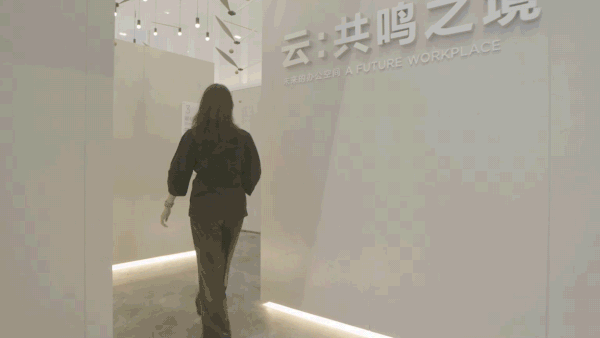
We addressed the challenges and opportunities for remote working in Asia. This was done by surveying 120 client organisations across 17 industries. We collected key insights on major trends that will shape future office environments and transform how people work.
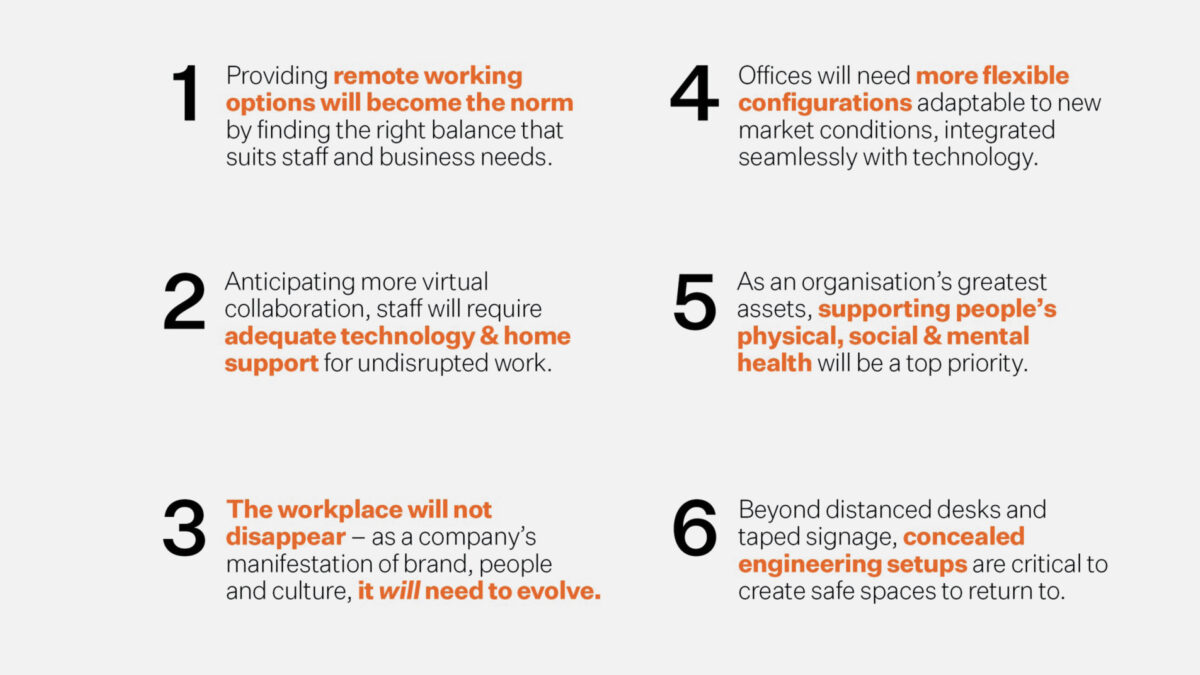
Restrictions are loosening in many parts of Asia. Some companies have already re-entered the workplace either partially or entirely. There’s also an increasing number of organisations wondering what their future holds.
Does remote working still make business sense moving forward? How can we, as individuals, remain on top of our health and productivity during such trying times? In what ways can companies support mental well-being while continuing to grow in the face of new challenges?
These are some of the questions we addressed in our ‘Remote Working’ survey. This survey evaluates experiences from 120 clients in 15 major hubs across Asia Pacific. In this report we uncover key trends and insights on companies’ remote vs. in-office policies. We also looked at solutions organisations can adopt to create futureproofed, human-centric work environments.
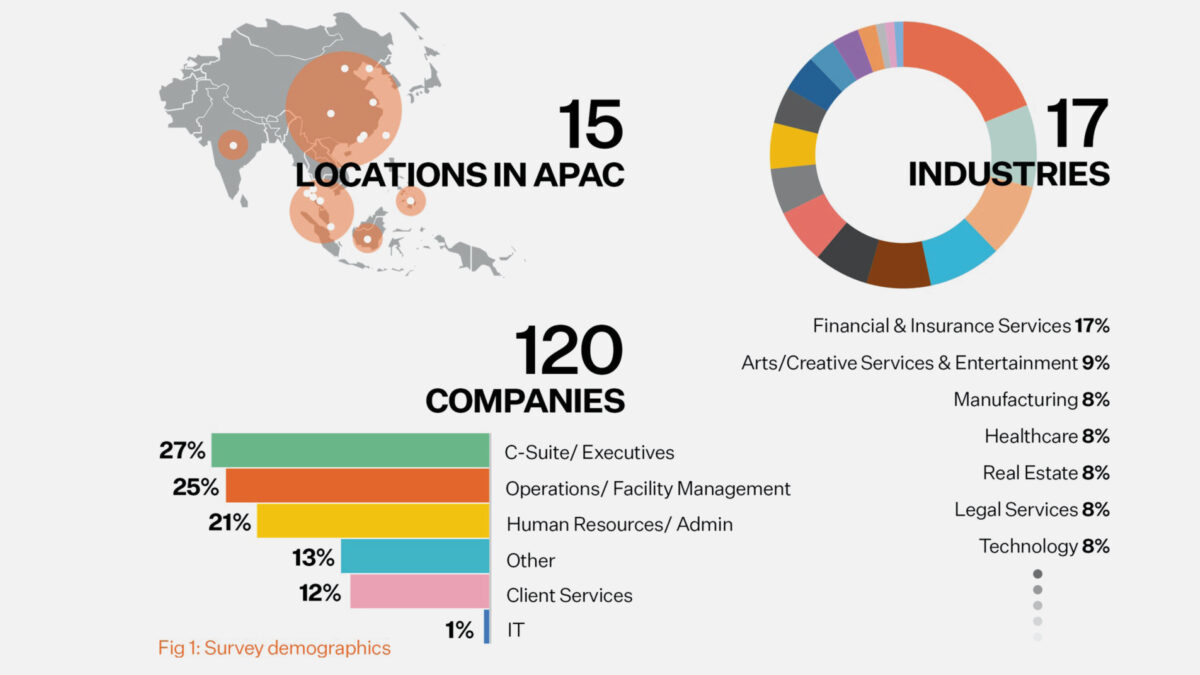
1 | Office vs. Remote: Balancing the best of both worlds
Respondents have expressed a strong preference for remote working policies that provide people with more flexibility and control over where and how they work. Our findings indicate that companies may look to continue adopting this type of working model moving forward. When asked about their future remote working policies, 56% of respondents will “most likely” continue adopting flexible arrangements, while 17% remain unsure at this stage.
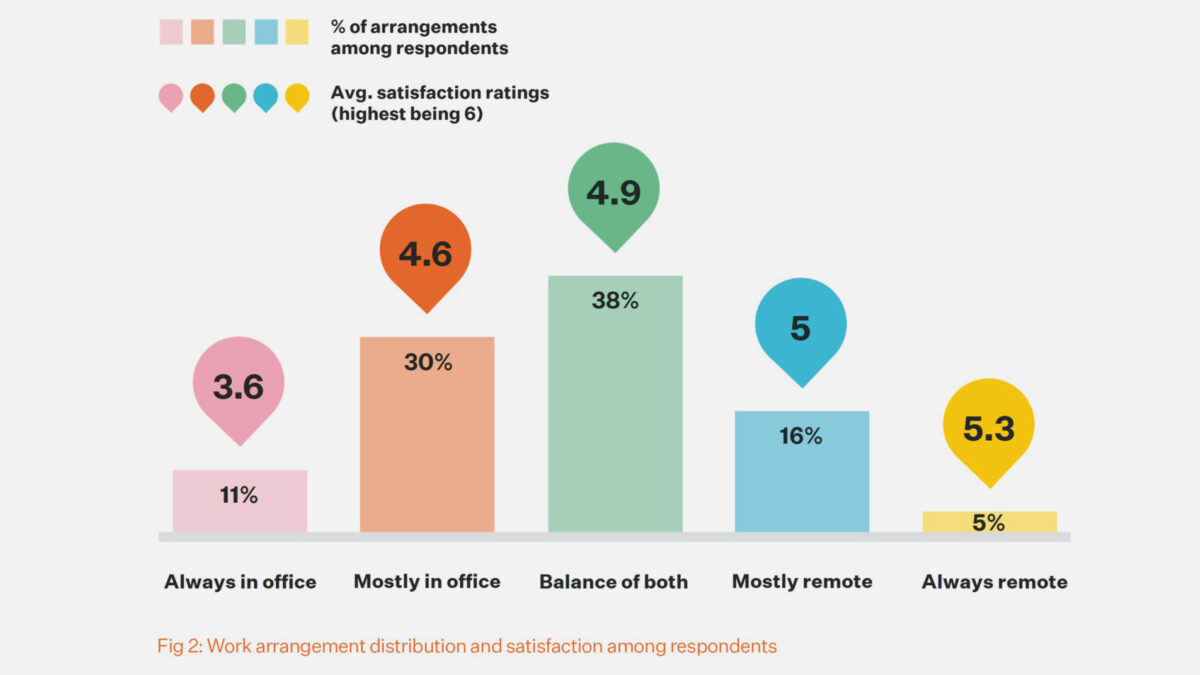
2 | Enhancing virtual togetherness
Respondents ranked their biggest challenges while working remotely in Asia. They ranked Internet connection (52%), uncomfortable home furniture (41%) and unfavorable technology support (37%). They also said these things impacted their ability to virtually communicate and collaborate effectively. Companies would benefit from offering upgraded digital tools. These digital tools would need to be synchronised with in-office technology. Comfortable ergonomic options would also enhance people’s work-from-home experience.
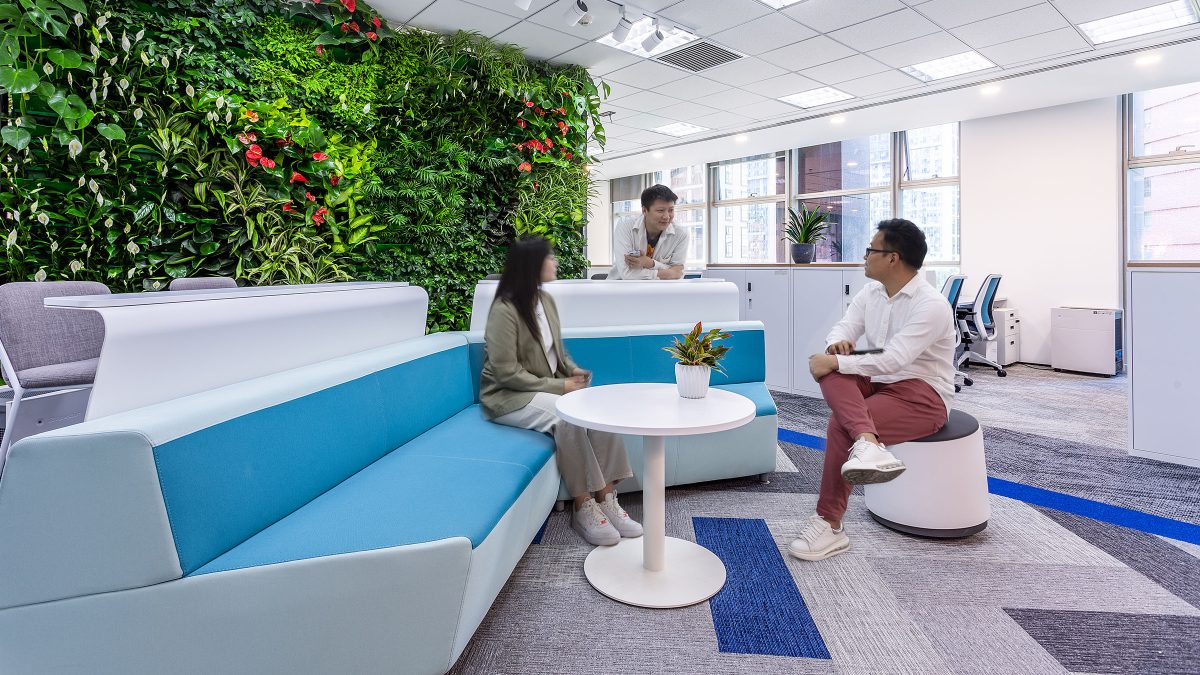
3 | Creating a destination for social connections
As inherently social beings, we naturally have a desire to learn from one another and cooperate with each other. Despite differences in preferences for remote working in Asia, future workplaces will need to shift the focus of their space configuration away from individual workstations. They will need to become more of a vibrant destination, where face to face interactions and engagement thrive. Therefore, a place for people to connect with one another, and the organisation.
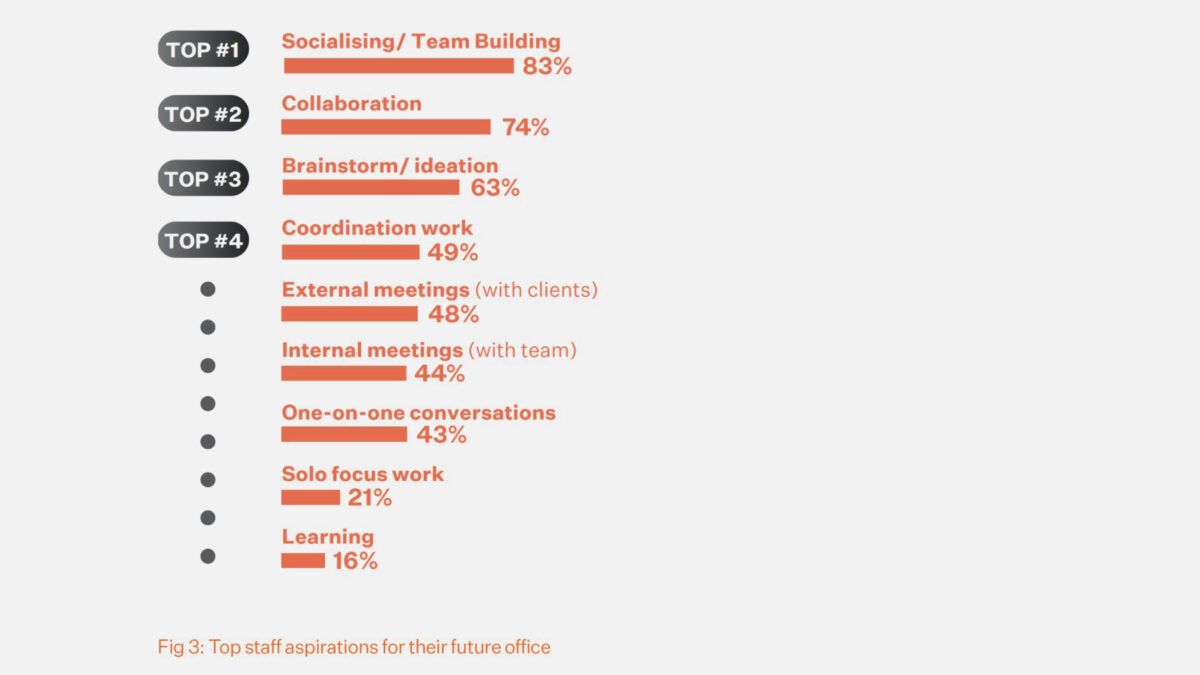
4 | Adapting to office density changes
Anticipating future uncertainties, workplaces will require more flexible and adaptable configurations to support changing needs across the organisation. As workstyles continue to evolve in response to shifting market and business conditions, companies may look to behaviour-based design to guide them to future-proof their office environment.
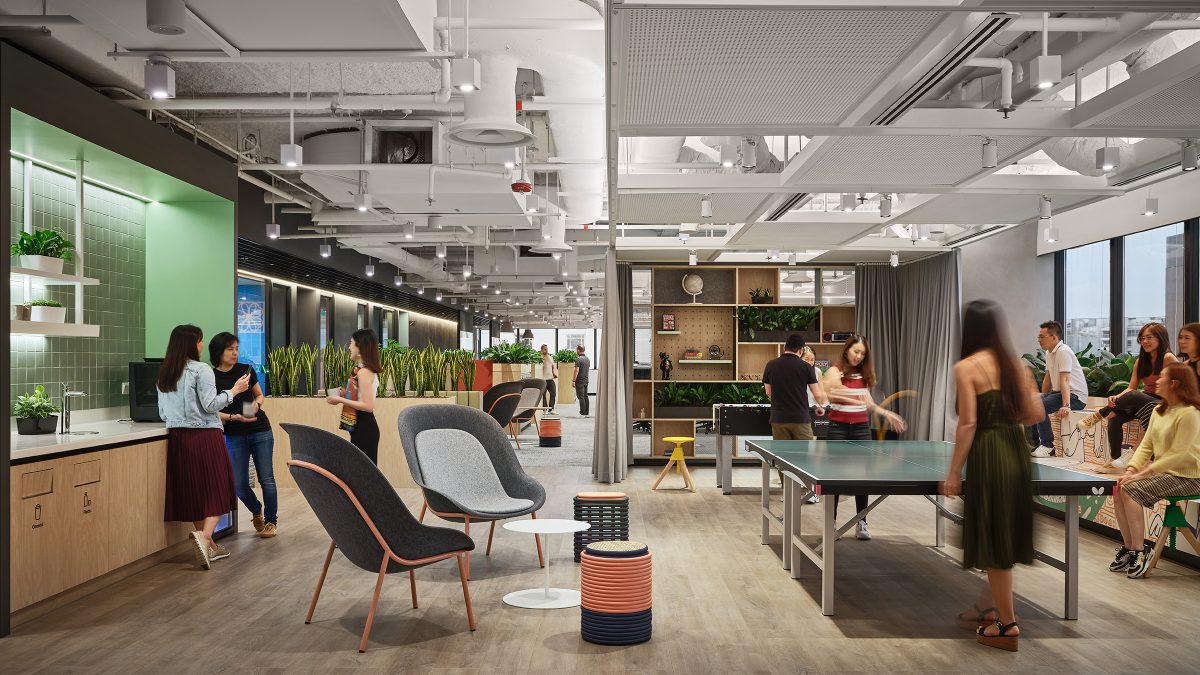
5 | Safeguarding people’s well-being from afar
Without adequate protocols in place, the boundaries between work and home have increasingly blurred throughout people’s remote-working experience. This has led to numerous health challenges, as a result of constant work demands as well as household disruptions. On the other hand, companies looking to enforce better work-from-home etiquettes. They will also provide staff with more choice where they will be more likely to see motivated, healthier employees in the long run.
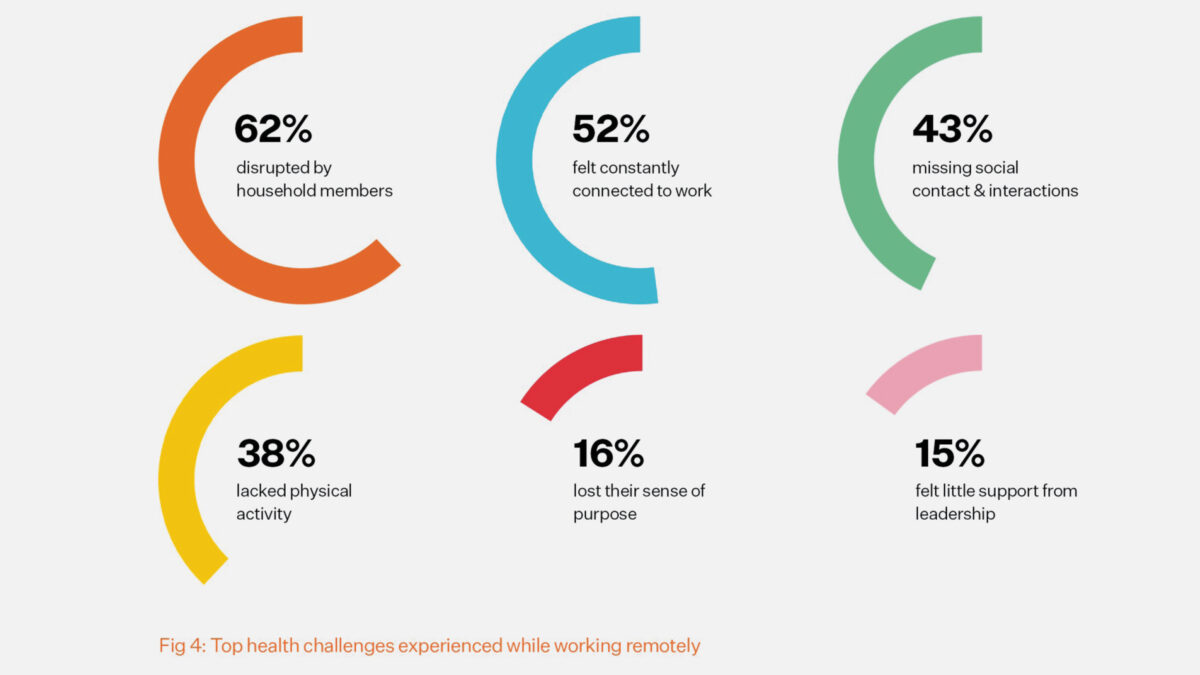
6 | Creating a safe office to return to
The top four concerns raised in our survey are related to virus transmissions, addressing people’s physical and psychological safety is just as important. This requires clear communication to assure steps are taken to upgrade the workplace to prevent viruses from spreading. From engaging graphics to more technical engineering setups, things can be done to create a safe environment for all occupants.

Considering the above, where does this leave your organisation? Is a reduction in real estate expenditure the right way forward? How can we continue to improve staff morale, motivation, and engagement when not together in person? We address these questions in our full ‘Future of Work’ report.
To access the report and explore ways to futureproof your own workplace, please contact communications@mmoser.com
Director
Director, Workplace Strategy